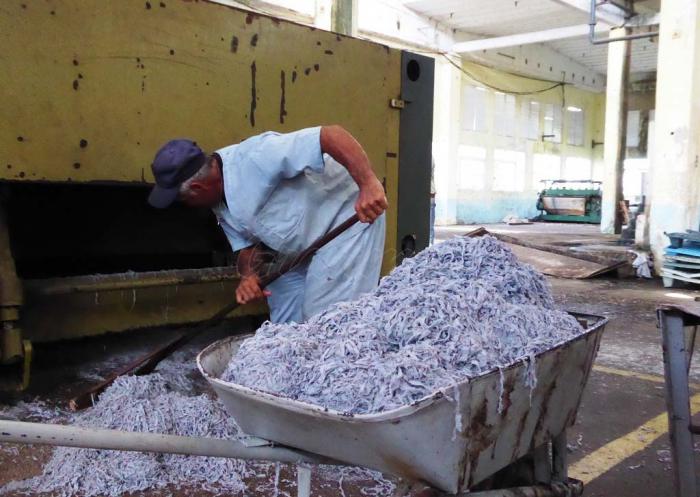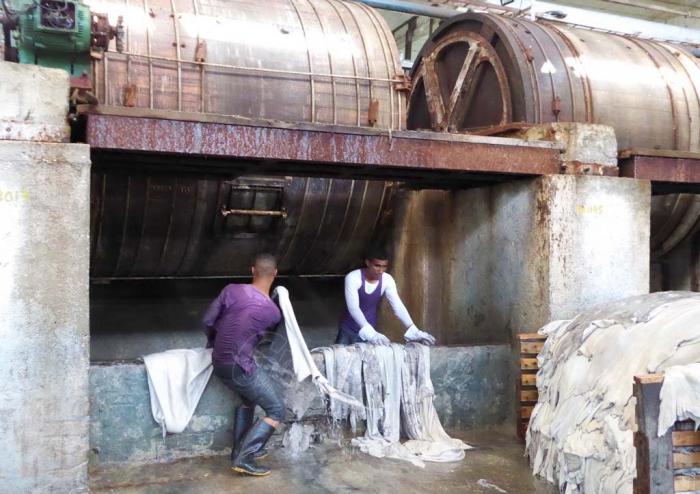What’s Happening with Cuba’s Leather Production?
By Osmel Ramirez Alvarez

HAVANA TIMES – Even though the majority of Cubans think that Granma newspaper is just an alternative for toilet paper; and even though the credibility and reliability of its information is low because it focuses on providing justifications and not objective news, I must admit that I always try and read it.
Seriously, I’ve become an expert in reading between the lines to try and get some real or useful information from the “sugar-coated half truths” and dressed up lies. To have a contrast with other media and motivate my own journalistic work, if nothing else.
The latter was the case when I read a very graphic and interesting article called “The Caibarien Tannery, a failed investment?” by Freddy Perez Cabrera, published on May 23rd 2019. I must give this journalist his credit because, while he didn’t delve into the real causes of the problems he exposed, nor did he ask who was responsible (which is understandable because he’s a journalist on the State payroll), his reporting was quite objective.
That whole industry is in a shambles, and, surprisingly, Granma is the one telling us. If Havana Times, Diario de Cuba, Cubanet or 14YMedio had published that article, this same party-line newspaper would have said that it is “the manipulation of the counter-revolutionary and mercenary press working for the Imperialist Empire.”
It’s similar to the journalism that is committed to making constructive social criticism, which is the work of most independent Cuban press. A commendable and much-needed task in any civilized society, but our government viciously criminalizes this form of press because it promotes freedom and democracy.
I recommend you read the feature article, but I’ll quickly tell you that it’s about an industry that reflects our entire economy and society on the whole. This Tannery, which goes by the name of “Patricio Lumumba”, is the largest in the country, and it processes 85% of leather in the whole of Cuba. It was founded in 1860 and with technology “inherited” by the Revolution (as they would call expropriated assets), it processed up to 500,000 m2 per year.
Finally, in 2013, an investment program was launched in order to modernize its technology. This cost millions of dollars, but was a complete disaster. There were so many delays, so much neglect, a lack of clarity in post-assembly contracts and so much other madness, that the investment was a flop. That is why the Granma journalist asks in the headline whether the investment had been unsuccessful.
The investment coincided with Raul Castro’s time in office, who had just replaced nearly the whole of the Council of Ministers, including Carlos Lage. I’m guessing these investments were planned by the former group of ministers and their replacements failed to implement them. However, examples like this one just go to show us the real cause of Raul’s failed economic plans, sinking us further into the crisis we are in, which is more visible under Diaz-Canel’s new government: they are dreadful managers.

With the technology revamp at the Caibarien Tannery, several machines never worked and some are working in unsuitable conditions. Even though they managed to increase production to 800,000 m2 (which is a lot less than what they were expecting), this problem with the machinery has been the cause of so much inefficiency in production. Which translates into low profits and, as a result, precarious wages. All of this has led to an unstable workforce and violations of many labor laws and regulations, as adequate working conditions aren’t guaranteed.
The landscape must be really bleak if the journalist dared to write, from the mouth of the Director, Miguel Sariol Espinosa, himself, that “… that investment in the early years of this decade didn’t bring the expected results (…), the industry began to decline, leading to an exodus of workers (…). Even though the workforce has grown, the situation today is a lot more complex, working conditions aren’t the best, there are lots of breakages, chemical products are in shortage…”.
The article, which was well-divided into three segments, ends with a very suggestive section title: “Something else to kill and cure”. Interesting statistics are provided in this section, but it hurts to read them, seeing that this country is in ruins and working so badly. It just goes to prove, yet again, what the real cause of the Cuban authoritarian socialism’s economic model is, which has nothing to do with the US embargo at all, just like so many other things. Proof? The journalist doesn’t mention the US embargo once, which, called a blockade, is a cliché in official journalism.
Cuban tanneries can’t process all of the leather available in the country because they don’t have the production capacity to do this, so they are forced to export a percentage (which they don’t specify) of leather that has just been cured. Likewise, according to estimates, approximately 15% of leather, which could be processed, is lost because of negligence or a failure to comply with established regulations at slaughterhouses. However, this figure could be a lot higher than what is being reported, not to mention the incalculable loss from illegal animal slaughter.
All of this ironically contrasts with the country’s waning shoe and leather goods industry. However, maybe there’s something that can relieve us or at least make us laugh a little: according to the industry’s claims, they strive “to supply a part of the demand”, without stating just how much that part is. Bla bla bla.
To finish off, it’s worth pointing out that the independent sector, cast aside and prevented from developing, covers over 50% of demand on the shoe and leather accessories market with their handmade products. However, they are banned from using cow leather, as well as other obstacles, and risk losing their licenses and paying expensive fines.
They use ram skins most of the time, which are processed by these independent business owners at small-scale tanneries. And, even under these conditions, they manage to produce a lot more efficiently than state-run industry, because unlike these, they are able to supply the needs of the market they have limited access to.

Yet another illustration of incompetent planning, management and marketing. Osmel Ramirez writes:
“the whole industry is in a shambles”
That surely reflects the Cuban economy as a whole.
Why not send in Machado Ventura in his hard hat as an illustration!